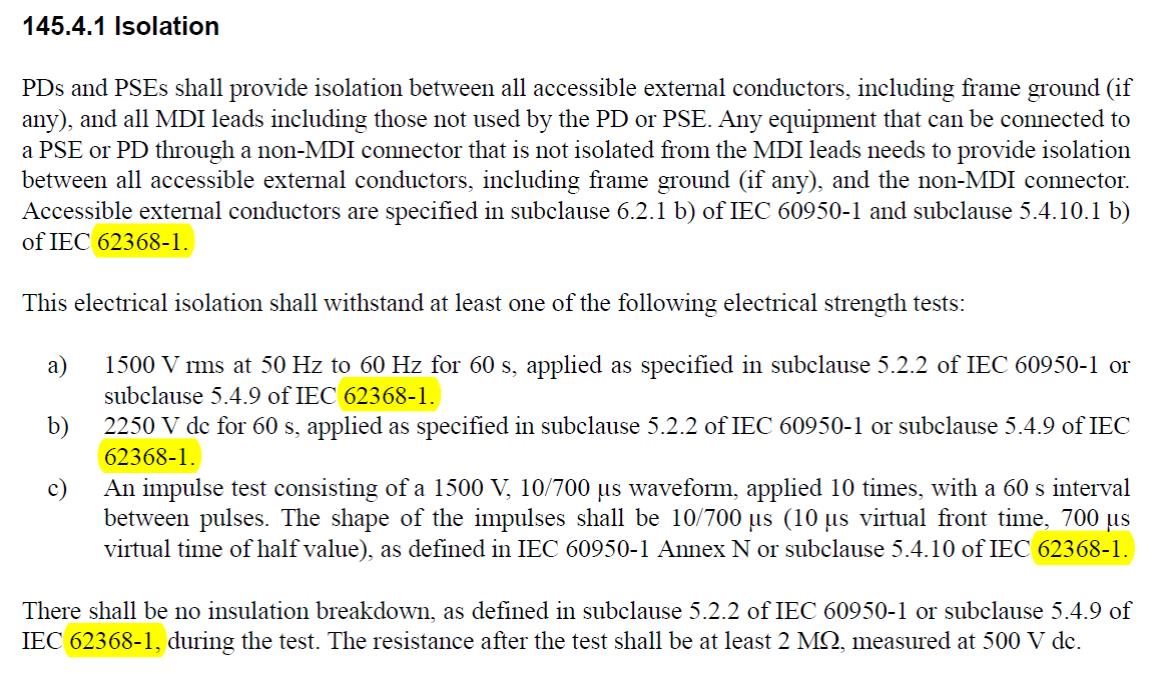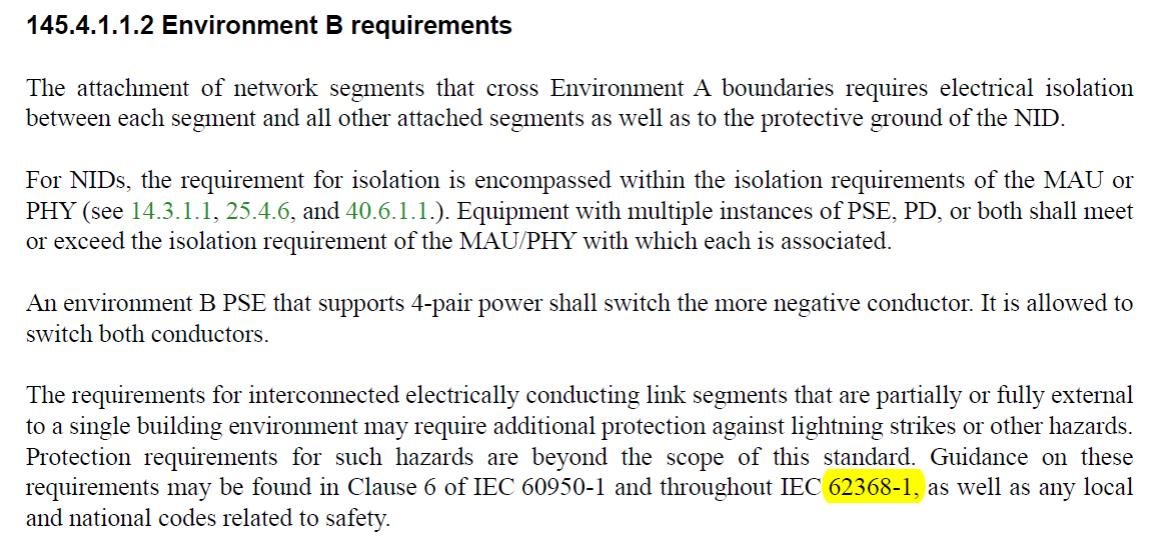The long-term industry prescriptive equipment safety standard IEC 60950-1 is due to be replaced by the hazard-based equipment safety standard IEC 62368-1 in about 2020. Currently there is IEC 62368-1 Edition 2 with Edition 3 due in August 2018. In IEC 62368-1, everything that isn’t an AC mains equipment port tends to get the generic label “external circuit”. Apart from the external circuit port V and I requirements, which PoE does meet, it seems to me that the external circuit separation requirements are covered in “safeguards against transient voltages from external circuit” and “separation between external circuits and earth”. My question is “Do the proposed TI IEEE 802.3bt reference designs meet the IEC 62368-1 safety requirements?” as 2020 will not be long.
-
Ask a related question
What is a related question?A related question is a question created from another question. When the related question is created, it will be automatically linked to the original question.





